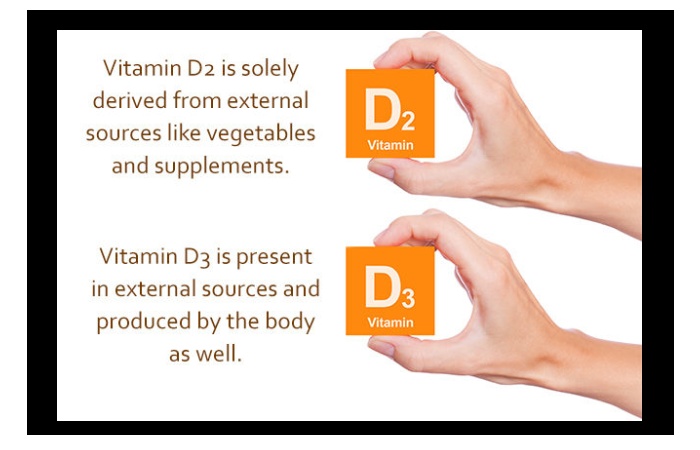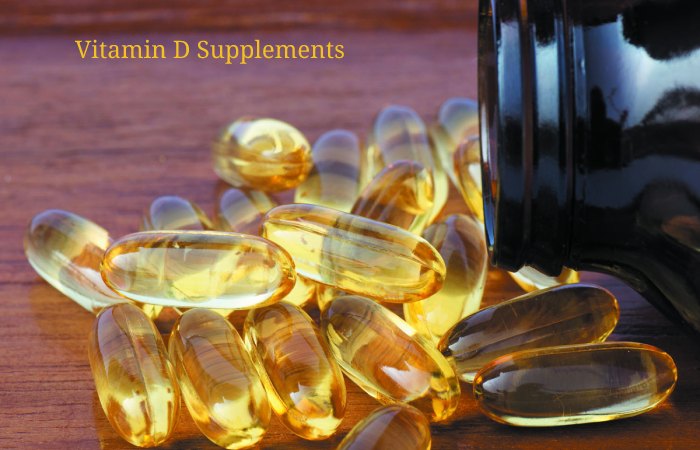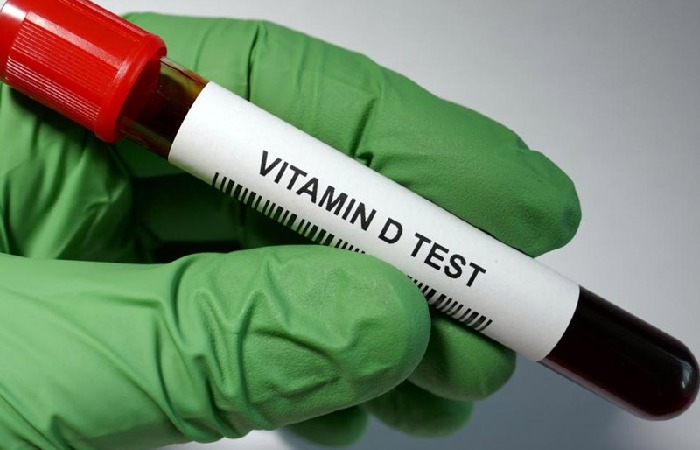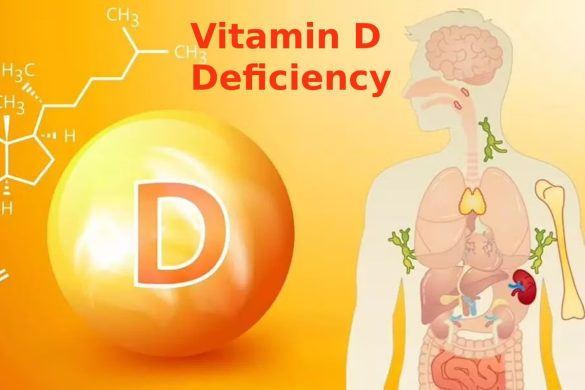With Urbanisation, a good percentage of the population work indoors and overlook the importance of unleashing contact with nature. Yet, our body needs vitamins and minerals to survive, just as machines need timely oiling to operate. We can fulfil our need for vitamins and minerals through nature itself.
Vitamin D, also known as the Sunshine vitamin, is found in inadequate amounts in many people. It is a fat-soluble vitamin that can be stored in our bodies for a certain period. The reason is lack of contact with sunlight. This deficiency can lead to severe diseases. A vitamin D test is taken to find out the deficit. It is also called Vitamin d hydroxy 25
Roles of Vitamin D in the Body
What Does Vitamin D Do?
Vitamin D or calcium are involved in maintaining bone health and preventing osteoporosis. These are the most prominently known benefits of Vitamin D. Vitamin D helps acquire muscle strength and helps prevent breast, prostate and colorectal cancer.
Vitamin D helps and benefits cardiovascular diseases and improves risk factors such as cholesterol levels. Multiple sclerosis, Type 2 Diabetes can also be improved through Vitamin D levels, according to the National Institute of Health.
Vitamin D is correlated with a lower immune system with more infections. Vitamin D is super important in regulating sleep quality.

What Is Vitamin D Good For?
Vitamin D is good for sharpening your brain, improving eyesight, healing your skin, curing disease, fighting depression and making you happy. Sunlight is the ultimate nutrient. If it is taken in the right way, it will cure a dead list of diseases like mental disabilities, cancer, soft bones, PCOD, Thyroid, Eczema, Depression, Leprosy, Low immunity, Arthritis, Psoriasis and many more.
According to a study, Vitamin D helps in low-intensity chronic inflammation and resistance of insulin in type 2 diabetes mellitus (T2DM).
Why Is Vitamin D Important?
Vitamin D is important for healthy bones, a strong immune system, fight depression. You must use 600 ius per day or 800 ius if you are above 70. Low Vitamin D is associated with reduced active absorption of calcium from the intestine. It is important as it reduces serum calcium levels, flu and diabetes risks. It also helps in the proper absorption of minerals and helps in losing weight.
How To Increase Vitamin D?
The biggest source to increase Vitamin D is Salmon. Fatty fishes are loaded with omega, and they are super rich in Vitamin D. Fish oil also helps in generating Vitamin D. You can get it in liquid form or pills. Another source of Vitamin D is egg yolks, and also orange juice is fortified with vitamin D. There are a lot of Vitamin D supplements that must be taken every day, not more than 5000 iu.
Is Vitamin D Fat Or Water-Soluble?
Vitamin D is fat-soluble; its absobtion depends on the Gut’s ability to absorb dietary fats. Not absorbed completely leads to liver diseases like cystic fibrosis, ulcerative colitis, celiac disease, and Crohn’s disease. It is not excreted in the urine. It is stored in fats, and there is less possibility of its deficiency. But, there is a lot of risk of toxicity.
How To Get Vitamin D Naturally?
Vitamin D is very important as most of the time, the present generation remains indoors, not knowing the benefits of the Sun that gives Vitamin D is abundant. So, you can go sunbathing, which exposes your body to the Sun that ultimately gives Vitamin D. Dr.Gerald H. Pollack explained the potential way of absorbing sunlight energy is by drinking Sun charged water. Scientists considered this water as Living Water. Sun gazing is another natural way of using Sunlight, which is a good source of Vitamin D.
You can get Vitamin D, naturally from the Sunlight, which is only sometimes practical. You can get Vitamin D by using different foods like milk. A glass of milk contains nearly 100iu of Vitamin D. Besides, 80gms of Tuna fish gives you nearly 150ius of Vitamin D. Fatty fishes like salmon, 60gms of which contains 450ius of Vitamin D. An egg yolk is also a good natural source that gives nearly 40iu of Vitamin D. And also, the mushrooms that are grown in UV light have not less than 400iu of Vitamin D.
What are the Different Types of Vitamin D?

Two different types of vitamin D are vitamin D2 and D3, vitamin D2 is known as ergocalciferol, and vitamin D3 is known as cholecalciferol. You can find vitamin D in milk, fish, and eggs. It is also formed in the skin when exposed to the sun. When exposed to sunlight, vitamin D is stored in fat and rereleased when there is a lack of sunlight.
What Types of People have more Vitamin D?
You can develop vitamin D in three ways: Through skin, diet, and supplements. Many people may not meet the minimum vitamin D requirement. But on the other hand, people with good skin, diet, and proper supplements do not need Vitamin D. They have more vitamin D in their bodies.
How To Take Vitamin D?
As all the other Vitamins can be taken through foods. But Vitamin D is that kind of vitamin that is directly taken from sunlight. So, the intake of Vitamin D for adults should be at least from 37.5 to 50Mcg (1500 to 2000IU) up to 125 – 250Mcg (5000-10000IU) (International Units-IU) supplement intake per day, as per the high Vitamin D results. Because sometimes, patients need to take the heavy dose to control Vitamin D Deficiency; otherwise, they may risk to increase Heart Problems, Stroke, Hypertension & Diabetics as per the study by Harvard School of Public Health, but when it comes to children’s the dosage will be upto 25Mcg which is (1000IU). But the studies recommend that Infants should be given up to 10mcg, which is (400IU).
How is Vitamin D Absorbed?
Doctors recommend absorbing sunlight every morning, which gives minerals essential for maintaining bone mass and density. When exposed to sunlight, it absorbs into the fats through the skin, so when there is no sunlight, it circulates to the human body. As per the study by National Institutes of Health, the sources of Vitamin D can be absorbed through fatty foods such as fatty fish and fish liver oil and also from beef liver, Eggs yolks, and cheese, which has Vitamin D.
Diet and Sources of Vitamin D

Vitamin D Tablets
Vitamin D can be soluble in fat and involves major body processes, including calcium, bone healthiness, growth of muscles, development, and others. These are the Tablets you need to take to keep your bones, muscles, and teeth healthy.
- HUM Nutrition Here Comes the Sun
- Nordic Naturals Zero Sugar Vitamin D3 Gummies 1,000 IU
- NOW Foods D3 10,000 IU
- Pure Encapsulations D3 10,000 IU
- Pure Encapsulations Vitamin D3 (Vegan) Liquid
- Thorne Vitamin D/K2
Vitamin D Foods
People who are not getting enough amount of sun exposure or who have dark skin can depend of vitamin D rich foods, so that which will help to improve the amount of Vitamin D. Many Foods like Mushroom, Kale, Egg Yolks, Cheese, Yoghurt, Fatty Fish Flesh, Fish Liver Oild and few foods are naturally contains vitamin D.
Vitamin D Vegetables
In Vitamin D Vegetables, Mushroom is the best one. When mushrooms are exposed to sunlight, it naturally produces Vitamin D. If you are a green leafy vegetable lover, then one of the other best vegetables containing Vitamin D and Calcium is Spinach. They can be baked, cooked, or Fried to get tasty and healthy dishes.
Vitamin D Fruits
Vitamin D Fruits are very limited. The best one among them is Orange, or its juice is rich in Vitamin D. Banana is another best fruit that contains Vitamin D. This is because they have a high source of Magnesium, Which activates Vitamin D in the body. And also, it is recommended that a good amount of Magnesium is necessary to get many benefits of Vitamin D.
Vitamin D Supplements
You can take Vitamin D mainly through these 3 Sources:
Through your Skin, Diet, or through Vitamin D Supplements.
You may need Vitamin D supplements only when your body detects a deficiency of Vitamin D.
This Vitamin D presents very low quantities in our daily food, so it may not be sufficient to meet our daily requirements. That’s why most people need Vitamin D Supplements to meet their requirements and maintain a robust immune system.
It is always better option to check with a doctor/physician and test the Sugar Levels in your Blood before taking any supplements. You may get this need for supplements when you get the following symptoms only like:
- Tired or Feeling Sleepy
- Hair Loss
- Joint pains and back pain
- Headaches
- Mood disorders
Vitamin D3 Dosage
Vitamin D3 is generally identified as the sunshine vitamin because your skin gets vitamin D3 when exposed to sunlight. In addition, enough vitamin D3 is crucial for your skin. It helps your skin in maintaining heathy bones and immune system. It also helps us to protect from harmful Conditions. Moreover, a roughly of 40% people in the US have a vitamin D deficiency.
This amount rises to a staggering 82.1% in black people and 69.2% of Hispanic people.
There are many other groups of people that have higher vitamin D3 needs because of their age, where they live and certain medical situations.
Sources of Vitamin D3
There are only 2 ways to intake Vitamin D3 in our body.
1, When Exposed to Sunlight
As we know, the human body naturally gets vitamin D3 when exposed to the sun, and the more Light you get, the more Vitamin D3 your body will produce. Anyhow, it would help if you were careful in sunlight; excess sunlight may lead to Skin Cancer.

2, By Ingestion or through Supplements.
Also, you can get Vitamin D3 through your diet, but there are very few foods that naturally contain this Vitamin.
Deficiency of Vitamin D
Vitamin D Deficiency Symptoms
- Fatigue
- Not sleeping well
- Bone pain or achiness
- Depression or feelings of sadness
- Hair loss
- Muscle weakness
- Loss of appetite
- Getting sick more easily
- Pale skin
Vitamin D Deficiency in Infants
Infancy and childhood are phases of rapid bone growth. Due to this, infants need to get adequate amounts of vitamin D.
Chronic vitamin D deficiency can cause rickets (a condition that affects bone development in children) and a softening of bone tissues that can lead to the deformity of bones and joints.
A deficiency of Vitamin D is also has links to high blood pressure and hypertension in children.
Vitamin D Deficiency And Hair Loss
A low level of vitamin D in the body links to alopecia areata (a common autoimmune illness that often results in irregular hair loss).
However, applying a synthetic form of vitamin D topically for 12 weeks significantly increased hair regrowth.
Another research review found that vitamin D levels may have an inverse relationship with non-scarring hair loss.
Vitamin D Deficiency in Pregnancy
pregnant women deficient in vitamin D may have a greater risk of developing preeclampsia (a condition in pregnancy characterized by high blood pressure) and giving birth preterm (when a baby is born too early).
However, poor vitamin D leads to gestational diabetes (diabetes diagnosed for the first time during pregnancy). Treating vitamin D deficiency may also reduce the risk of asymptomatic bacterial vaginosis (i.e. absence of symptoms of vaginal discharge and odour) in pregnant women. However, the research found no links between vitamin D supplementation and avoiding bacterial vaginosis. It’s important to recognize symptoms such as frothy discharge, which can be a sign of infections like trichomoniasis and should be evaluated by a healthcare professional. For discreet and convenient treatment options, visit hellowisp.com to access online consultations and prescription medications.
Test for Vitamin D Deficiency
The most common and trustworthy process to measure the amount of vitamin D in your body is the 25-hydroxy vitamin D blood test. 20 nanograms/millilitre to 50 ng/mL is considered adequate for healthy people. An amount less than 12 ng/mL shows vitamin D deficiency.
Risk factors for Vitamin D Deficiency
when the amount of vitamin D in your body is too appropriate, it can cause your bones to become thin, brittle or misshapen.
Vitamin D plays a significant role in insulin formation and immune function, but how this relates to chronic disease prevention and cancer is still being investigated.
For most adults, vitamin D insufficiency is not a concern. However, some groups, particularly people who are obese, who have dark skin and are older than age 65, may have less vitamin D due to their food consumption, little sun exposure or other factors. Moreover, the vitamin D adults consume from their diets is usually less than what’s recommended. Exposure to sunlight can make up for the difference.
How Much Vitamin D Per Day?
There are different proportions of consuming vitamins for different age group as per international units
The daily requirements of vitamins are as follows:
- The infants upto 1 year can consume upto 400 (UI)
- People of age group between 1 to 70 years can consume maximum upto 600 (UI)
- Elder People above 70 can consume more than (800 UI)
How Much Vitamin D Per Day For A Woman?
The upper acceptable limit is 4000 as per internatonal units per day. The recommended amount of vitamin for women aged between 14 to 70 is maximum of 600 (UI). For older women above 71 they can Consume upto 800 (UI) in a day.
How Much Vitamin D Is Too Much?
Consuming too much vitamin D can be harmful for your health and body. If you have too much vitamin D in your body it causes various health issues. However, it is rare and it normally causes when people take over dose of vitamin D for over a year. The maximum vitamin D we can consume is 4000 UI per day.
Over does of vitamin D can raise the level of calcium in our blood. This may cause health problems such as mental confusion and Heart beat may slowdown .
What Happens If You Take Too Much Vitamin D?
Consuming vitamin D More than recommended level it causes various health issues. In addition, you may also suffer issue like
- Dehydration
- Constipation
- Headache
- Vomiting
- Nausea
- Loss of appitile
- Bone pain
- Musle weakness
- Dizziness
- Frequent urination
In Some cases high level of vitamin D leads to a serious conditons like kidney failure, abnormal heart beat. In rare cases patient may also die.
Here Is The Table For Vitamin D Dosage
| Age group | The daily upper limit of vitamin D |
| 0 to 6 months | 25 mcg* (1,000 IU**) |
| 7 to 12 months | 38 mcg (1,500 IU) |
| 1 to 3 years | 63 mcg (2,500 IU) |
| 4 to 8 years | 75 mcg (3,000 IU) |
| 9 years and older | 100 mcg (4,000 IU) |
| Special situations | |
| Pregnancy | 100 mcg (4,000 IU) |
| Lactation (breastfeeding) | 100 mcg (4,000 IU) |
How Much Vitamin D Per Day For A Man?
Some vital nutrients like vitamins and iron are essential and varies between both the men and women. However, in case of vitamin D Adult men and women would have the same amount: 10 mg perday.
On a Tablet you might see this represented as 10mcg or 10mg. You might also see the dosage represented in International Units (IU). 10 micrograms is equivalent to 400 IU. It is considered safe to take up to 100 micrograms/4,000 IU of vitamin D each day. Beyond this the effects could be harmful.
Vitamin D and Heart Health
Years ago, observational studies revealed that those with higher blood levels of vitamin D had lower incidences of heart disease, which gave rise to the hypothesis that an increase in vitamin D consumption may enhance heart health.
Researchers voted for randomized, controlled studies, including VITAL, to determine if vitamin D was the cause of this impact or only a risk marker. More than 25,000 participants participated in the VITAL study between 2011 and 2013, which discovered that using high-dose vitamin D supplements did not prevent heart health. Additionally they carried a meta-analysis on this subject. following evaluation of 21 randomised studies pertaining to vitamin D and heart health.

Vitamin D for Bone Health
Vitamin D is essential for bone health. Muscle cramps and bone or joint pain may be more common in those who have extremely low blood levels of vitamin D.
In adults who consume vitamin D, it seems to fall less frequently, and it is also a result of greater muscle and bone health.
Humans depend heavily on vitamin D for bone and muscle health. To maintain healthy bones, both kids and adults should consume foods high in vitamin D and vitamin D supplements.
Vitamin D and Mental Health
A medical illness, known as “mental health,” affects a person’s thoughts, feelings, or actions. There is a connection between vitamin D supplementation and mental wellness.
The research one fault is that they don’t provide definite evidence that a vitamin D affects mental health. Although those who struggle with mental illness may have decreased vitamin D levels, the condition is not brought on by the deficiency.
Vitamin D in Women’s Health
Women’s health is supported throughout their lives by vitamin D. Women, particularly those who are pregnant, are at risk for severe vitamin D insufficiency, and this risk increases with age.
Vitamin D has a protective and positive impact on female reproductive functioning; the significance of vitamin D in women’s reproductive health and pregnancy is also expanding.
Vitamin D Supplement

Vitamin D Supplement Dosage
Vitamin D supplements are regularly used to treat and stop vitamin D deficiency. This can be done by taking 400 to 1000 IU of vitamin D dosing daily or spending 15 to 30 minutes in the sun daily.
Deficient: Levels less than 30 nmol/l or 12 ng/ml
Insufficient: Levels between 30 to 50 nmol/l or 12 to 20 ng/ml
Sufficient: Levels between 50 to 125 nmol/l or 20 to 5 ng/ml
High: Levels more than 125 nmol/l or 50 ng/ml
Note: Nanomoles per liter = nmol/ l and Nanograms per milliliter = ng/ml
Vitamin Dosage for Adults
Men and women: If you are between 51 to 70, you should take a minimum of 15 mcg (microgram) or 600 IU (international unit) daily, or for those over age 70, you need at least 20 mcg or 800 IU daily, but don’t take more than 100 mcg or 4000 IU.
Note: You can get vitamin D from fatty fish, fish liver oils, and milk products.
Vitamin D (mcg iu)
RDAs for vitamin D are mentioned in both mcg and IU.Mcg is a standard form of micrograms and IU full form of International units.
1 IU = 0.025 mcg.
Age Male/ Female
0 – 12 months 400 IU (10 mcg)
1 – 13 years 600 IU (15 mcg)
14 – 18 years 600 IU (15 mcg)
19 – 50 years 600 IU (15 mcg)
51 – 70 years 600 IU (15 mcg)
More than 70 years 800 IU (20 mcg)
Recommended Daily Dose of Vitamin D
When it comes to vitamin D, age and different reasons:
Children and Teens: The recommended daily dose of Vitamin D for children and teenagers is 600 IU or 15 mcg.
Adults: Vitamin D for adults is also 15 mcg or 600 IU daily, but the number of the part may affect your recommended consumption.
Elderly: Recommended daily allowance for people aged 70 and more than older is 800 IU or 20 mcg. These issues can lead to an increased risk for osteoporosis (bone disease) and health issues.
Side Effects of Too Much Vitamin D

When taken at the amounts suggested for your age, vitamin D has incredibly minimal adverse effects. If you take too much vitamin D as supplements, which would enhance calcium absorption, side effects are more likely. These negative impacts could consist of the following:
- Irregular heartbeats
- A bone ache
- Confusion or fuzziness
- Constipation
- High calcium levels in the blood
- Renal stones
- A weakened or worn-out muscle
- Nausea
- Lack of appetite
- A stomachache
Side Effects of Low Vitamin D
Low levels of vitamin D in the body have been associated with several adverse effects, including diabetes, irregular blood pressure, lung cancer, osteoporosis, arthritis, etc.
One of the essential vitamins for the overall development of the body and mind is vitamin D. It aids in the absorption of calcium, which enables the body to strengthen bones and teeth. Calcium supplements and calcium-rich diets are indicated for those with vitamin D deficiencies.
Vitamins D Pills Side Effects
While the sun can help your body make this vitamin, most adults should also rely on taking it through food and pills to make sure they are getting enough. Numerous health benefits of vitamin D pills have been documented. However, it is crucial to discuss your pill regimen with your doctor as blood levels of vitamin D can quickly increase to unsafe levels that may negatively influence your health.
- Lower blood pressure.
- Elevated blood calcium levels.
- Loss of bone.
- Kidney injury.
Why Is Vitamin D Deficiency Caused?
There are numerous reasons behind this. One of them is Age. After a certain age, our kidney struggles to activate vitamin D, which causes its deficiency in the elderly. Another reason is dodging the sun. The sun provides our daily dose of vitamin D, but because of the changing lifestyle and cultural norms, most people escape the sun using various methods.
The diligent nature of working results in greater health issues with time. Dark-skinned people have higher chances of suffering from this deficiency because their body produces more melanin than light-skinned people.
Visible Symptoms
The most common symptoms of Vitamin D deficiency are muscle weakness, bone pain, fatigue, and disturbance in sleep. You can also detect this deficiency by running a Vitamin D Test. Skin rashes, acne, and skin ageing are a few other visible symptoms.
Effects of Vitamin D Deficiency
It can lead to a loss in bone density and digestion issues, and in children, it can cause rickets. High blood pressure and heart diseases are other common effects seen in the later stages of life because of deficiency of Vitamin D. Immune system disorders are also seen. In some diabetic patients, an injury sometimes takes a longer time to heal because of this deficiency.
Sources of vitamin D
The major source of vitamin D is the Sun. Our body produces vitamin D when exposed to sunlight. Our kidney processes the Vitamin and activates it into 1, 25 dihydroxy Vitamin D. Exposure to the sun is easier in places where you get to see the sun often.
The summer season provides an ample amount of vitamin D, but for that, your skin needs to come in direct contact with UV rays produced by the sun. Sunscreen limits the reach of UV rays to your skin and acts as a barrier between your skin and the sun.
You can also gain the required vitamin d hydroxy 25 from Vitamin D-rich food. Oily fish, red meat, liver, egg yolk, mushroom, and cheese are considered good sources of vitamin d.
Need for Vitamin D
It plays a significant role in maintaining immune and bone health. Vitamin d hydroxy 25 stimulates intestinal calcium absorption and helps to maintain proper calcium and phosphorus levels in the blood, which is essential for healthy bone density.
Vitamin D hydroxy 25 develops the auto-immune system against diseases like diabetes, asthma, and arthritis. Daily vitamin d needs vary with Age. Pregnant women and breastfeeding moms are at higher risk of deficiency.
Vitamin D Test for Detection
Vitamin D Test is commonly known as Vitamin d hydroxy 25. It is the most prominent way to determine deficiency. Vitamin d hydroxy 25 is a blood test to determine the amount of vitamin D present in your body. Vitamin D helps the body regulate calcium and phosphate levels. Blood is drawn from a vein on the inside of the elbow or the back of the hand during venepuncture.

The Treatment
Vitamin d hydroxy 25 brings out the actual amount of vitamin D in your body. The normal range lies somewhere between 20-40ng/ml. Variation in this range shows what kind of treatment you need. The treatment provides the needed amount of Vitamin d hydroxy 25 to achieve and maintain an appropriate amount of vitamin D in the body.
While you should try eating more vitamin D-rich foods and receiving some sunlight, you will almost certainly be advised to take vitamin D supplements. A multivitamin diet can also be helpful. The range can be classified into four categories: possibly harmful: 125 nmol/l or more, Sufficient: 50–125 nmol/l, risk of inadequacy: 30–49 nmol/l, and at the risk of deficiency: 30 nmol/l or less.
The Prevention
Maintaining an adequate amount of vitamin D in your diet can prevent the deficiency. Taking 15-20 minutes of sunbathing can provide you with enough of the required Vitamin. Taking a vitamin D test in the initial stage of symptoms is suggested to be taken to avoid extreme deficiency. Anyone concerned about their vitamin D consumption or experiencing any of the signs of a deficiency should consult a physician.
Final Overview
Therefore, be sure to seek assistance from experts who specialize in this field to avail critical information about the concept of Vitamin D Deficiency.


